What is a smart home: operating principle and design + project creation and assembly tips
Numerous engineering systems, united under the common name “Smart Home,” provide users with a high level of comfort and safety.But there are hundreds of varieties of such equipment, all of which solve radically different problems.
Let's try to understand all the intricacies together and understand what a smart home is, and then move on to practical steps to improve the comfort of your stay. Because expensive components leave no room for error.
The content of the article:
What is such a system?
Any set of electronics manufactured for a smart home is high-tech equipment. Designed for automated and, most often, centralized control, flexible, precise management of the activities of communication systems of an apartment or house.
Basic features of a smart home
Intelligent command blocks of a smart home are capable of creating an optimal microclimate in an apartment or house.
Moreover, to solve this problem, all heating devices, air conditioners, split systems, filters, ozonizers and other similar products are controlled.
The essence of the process is as follows: control centers equipped with processors receive the results of measurements of the chemical composition of the air, its temperature, humidity and give signals to the necessary structural elements.
So, if the premises need to be cooled, then a command is given to turn on the air conditioner, and at the same time all heating equipment is turned off, if any was working. That is, command blocks of systems also provide coherence to all running processes.
Read more about how the climate control system works and the features of its selection. Further.

In general, the “Smart Home” in its advanced configuration is capable of simultaneously controlling several hundred devices related to the systems:
- lighting, both internal and external;
- emergency power sources, which can be either batteries or generators;
- energy consumption control;
- heating, air cooling;
- heating individual elements of the building (storm drains, steps);
- water supply;
- sewerage;
- filtration;
- identification of emergency situations (gas leaks, water leaks, problems in the electrical network);
- monitoring.
Alarm control can also be carried out, surveillance cameras and a variety of other equipment, which even includes curtains, windows, televisions, audio and video equipment, located throughout the apartment or house.
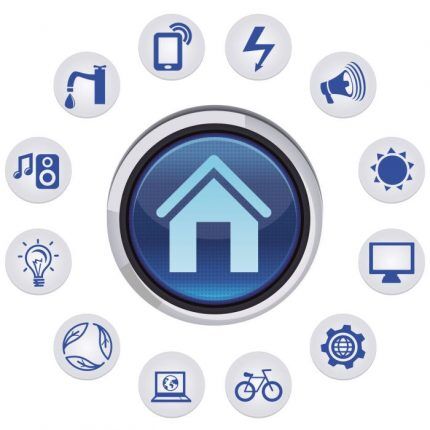
The processes themselves can be both popular and rare, one-time ones, for example, the former include temperature control, lighting brightness and many others.
The second category includes setting individual flows of warm or cold air.For example, capable of warming the feet of users watching TV shows on winter evenings.
The peculiarity of modern smart home systems is that with their help it is possible to set different modes in all rooms of an apartment or house. For example, the temperature in the nursery may be the highest, and in the corridor the lowest, since it practically does not need heating.
At the same time, the system can regularly combat high humidity in the bathroom, and air pollution in the kitchen.
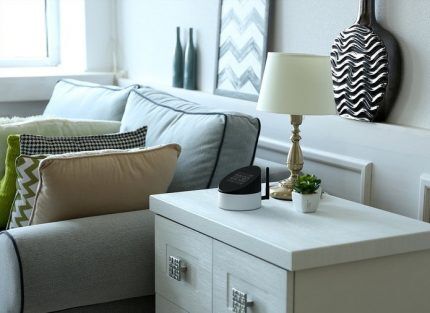
Complex systems that are capable of managing all important processes are considered to be the most effective.
But the simplest sets of equipment that perform only one function also have the hallmarks of a smart home. For example, this includes a processor that controls turning on/off a heater installed in a dacha.
Installed in the mains Dimmer, which regulates the brightness of lamps and at the same time reduces energy consumption, also applies to intelligent equipment.
How does the system work and structure?
Let's try to understand how the smart home system in demand today works and what it is like. The basis of any set of intelligent equipment is the processor, which is a fairly powerful and modern computer.
Its effectiveness is ensured by software with dozens or even hundreds of preset modes, which are among the most popular.
As a result, in many cases, users will simply need to enter the necessary parameters, for example, temperature, etc. and activate the desired program.
Next, the control unit will carry out control by comparing the actual values with the programmed ones. All necessary information comes from the internal controls of the equipment included in the system, controllers, sensors, which are installed in each room.

If the data received in real time does not correspond to the established ones, the control unit issues the appropriate commands to make adjustments. Moreover, they all ensure coordinated operation of the equipment.
That is, in order to increase the temperature in the desired room, the air conditioner is first turned off and only then the heating equipment is turned on. This allows you to save up to 40% of electricity, and also eliminates the dangerous critical load on the network.
Types of smart home
Manufacturers take into account the needs of different categories of users, as a result the market is saturated with different types of intelligent equipment.
This is how it happens:
- wired;
- wireless.
In the first case, the command unit, actuator sensors, servomotors, controllers and other structural elements are connected to each other by wires.
The advantage of this method is the high correctness of command execution. This means that there is virtually no chance of overloading the transmission bus with a large number of signals. In addition, fiber optic wires provide high recall speed.
The most important disadvantage is the complexity of installation, since a large number of wires have to be laid and hidden from view.
This also leads to significant additional costs for the necessary building materials, so the optimal time to install wired systems is to carry out renovations in the premises.
And also, laying wires is labor-intensive, so quite a lot of time is spent on this procedure.
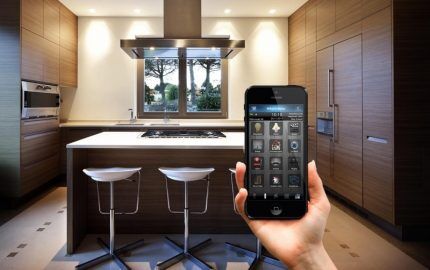
Wireless types of equipment differ in that communication between structural elements is carried out using radio signals, for which appropriate communications are used.
An important advantage of this equipment option is ease of installation. During which there is no need to change the design of the premises or spend money on building materials, which makes installation an easy and quick procedure.
The main disadvantage of wireless systems is the method of communication between components.Since radio signals significantly limit their functionality, in addition, batteries will have to be replaced quite often, which is inconvenient and is a regular expense.
Another classification of Smart Home systems by type of control - it can be a centralized or decentralized option.
Although centralization of control is one of the most important advantages of any set of such equipment and in most cases it belongs to this type, decentralized systems also have a right to life.
The reason is that this method makes it possible to neutralize the consequences of the failure of any individual component of a smart home.
Also, the use of subsystems with various control units makes it possible to increase the reliability of key functions.
For example, if the owner of a premises wants to reliably protect it from unauthorized entry, then using two decentralized systems is a more practical solution than one centralized one.
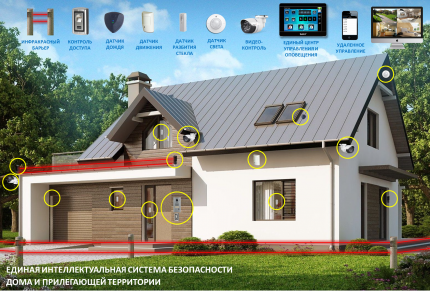
The main disadvantage of using several smart home systems at the same time is the difficulty in setting up and adjusting.
This happens because the number of components increases - each decentralized system has a separate processor, which often creates confusion when they interact or are controlled by the user. This feature also leads to an increase in the cost of the equipment set.
As a result, decentralized systems are recommended to be used only in certain cases when the advantages clearly outweigh the negative aspects.
An important feature is the division into types of protocols, which are:
- open;
- closed.
The first category includes systems that are controlled using a language used by different manufacturers.
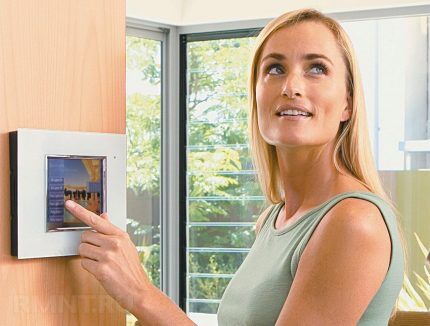
Closed systems are those that are controlled in a language created and used by only one manufacturer, which makes it possible to include in the kit only components developed and manufactured by him.
This reduces functionality and versatility, but ensures a high degree of compatibility of devices and devices.
Intelligent control system diagram
Any set of equipment for a smart home is similar to a construction set from which you can create anything you want.
Therefore, it is unlikely that a user who wants to assemble any kind of it at home will find a suitable scheme for his living conditions.For example, a standard option for a 3-room apartment or for a house of a certain area and number of floors.

You will have to draw up the necessary diagram yourself or with the help of specialists. Exceptions may be the simplest smart home options or decentralized systems, which are also not very complex.
An example could be a diagram of installing a dimmer in an electrical network and working in tandem with it motion sensor, since it is standard and therefore the same in all cases.
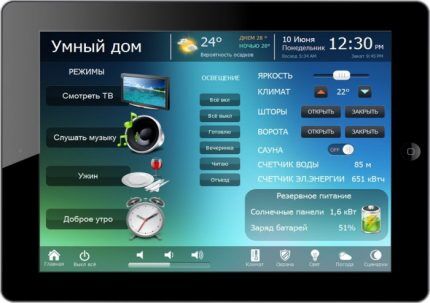
But even in this and similar cases, it is recommended to contact specialists. The reason is that all systems operate on electricity and some serious errors can lead to fires, electric shock, and damage to expensive structural elements.
Recommendations for self-assembly
Since the cost of intelligent systems is expensive, and their installation will bring additional costs, and considerable ones (up to 50% of the cost of a set of equipment), their independent installation will help to save a lot.
And such work is also fun, so assembling a smart home with your own hands, starting with the creation of the project, can be considered as a hobby.
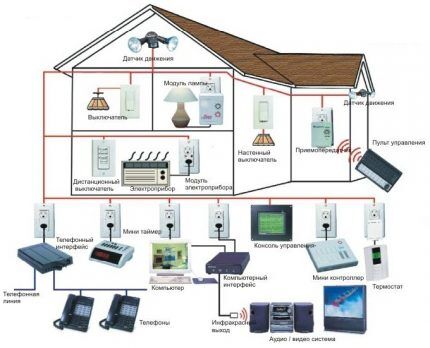
But it should be understood that not every willing user is able to independently install such a system - to do this, you need to have a whole set of knowledge and skills.
Which include:
- Ability to work with electrical appliances. Moreover, in this area you need to have broad knowledge, for example, such basic knowledge as the skills of reliably connecting structural elements and cables to each other. You will also need skills in assembling electrical panels, an understanding of the principles of controlling modern electrical appliances, and other similar things. Knowledge of safety regulations is also mandatory.
- Programming skills, and for various operating systems. They are needed because each time an intelligent system is installed, a graphical interface will have to be created, with the help of which further control is carried out.
- Knowledge of the principles of constructing modern automation systems. That is, you need to at least understand the types of controllers, their inputs/outputs, understand what sensors and other equipment are allowed to be used with them, etc.
- Understanding the system's operating algorithms as a whole and all its individual parts.
If all the listed knowledge and skills are available, then you need to move on to the preparatory procedures. To begin with, it is important to determine the tasks that a set of equipment should solve.
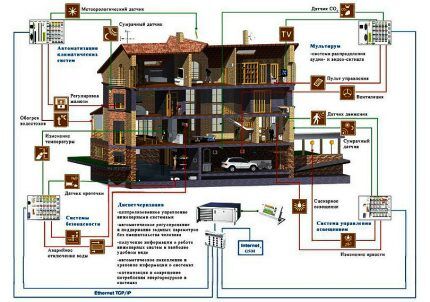
Then you need to figure out whether it is technically possible to implement this - whether the electrical network can withstand it, whether the characteristics of the components are sufficient. In addition, housing should be inspected to identify locations for installation. You also need to understand whether you have enough money to buy it.
And after that, you can begin to create a working draft of the future system.
If a survey of the premises in order to identify the optimal places for installing individual parts of the smart home kit can still be done by yourself, without having the skills and experience in such matters, then the development of the project should only be undertaken with knowledge of the matter.
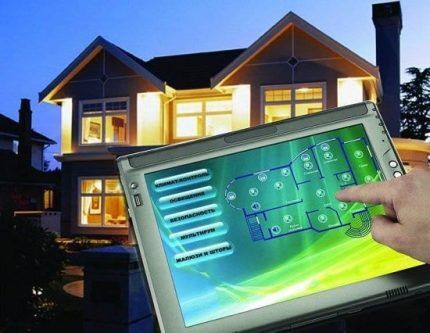
Even if there are plenty of practical skills and knowledge, it is recommended to start getting acquainted with intelligent systems with the simplest options.
That is, you should purchase a kit that includes a controller, a set of sensors and other equipment that allows you to solve any one important problem.
For example, monitoring the occurrence of water leaks, performing video surveillance or adjusting the brightness of lights. And then thoroughly understand all the features.
The described approach will allow you to gain practical experience, find qualified specialists who can provide effective assistance and, in addition, avoid significant financial losses, even if interest in the smart system disappears or something does not go according to plan.

Even for the first independent attempt to assemble an intelligent system, it is advisable to purchase equipment that is controlled by controllers from Beckhoff, Siemens, ARIES, and others like that. Because they are freely programmable, easy to use and suitable for solving various problems.
If, together with any of the listed controllers, you use a special set of software designed to control the system from a computer equipped with Windows, a tablet, a smartphone with iOS, Android, then it will be possible to easily change the scenarios.
And also quickly transform the interface, remove unnecessary and add new design elements.
Moreover, every user can do all of the above independently, even with basic programming skills. An example of control software is Easy Home, which can work with all the popular operating systems listed above.
Conclusions and useful video on the topic
The first video will give you the opportunity to understand the capabilities of a smart home, how and what such simple systems are equipped with, and how you can do it yourself.
The following video material is also devoted to the installation of intelligent systems with your own hands.
Modern intelligent automation can not only increase comfort, but also improve the standard of living of all inhabitants of the house. But to do this, you need to understand the principle of how a smart home works..
Otherwise, the owner will face not just disappointment, but also significant financial losses. Since functional kits cost a lot of money.
Still have questions about the topic of the article? Or can you supplement our material with valuable information about the principles of operation of the Smart Home system? Please leave your comments and share your experience in the block below.




When I see information about a “smart home,” I always laugh and remember the video on this topic. The plot is simple: a girl comes home after going to the dentist and cannot open the door because the system does not recognize her face or voice. It starts to rain and thunder, and she, poor thing, stands in the yard all wet and swears from powerlessness. What I mean is that in our realities one cannot trust electronics 100%. Such a “smart home” has a lot of disadvantages that are not visible at first glance.
I don’t like the idea of making a smart home, but I would still like to implement some elements in my own home. For example, the ability to eliminate gas leaks. That is, the ability to remotely close the valve. Another option is to turn off outlets that are not currently working. This is very convenient when there are small children in the house. Well, and a sensor that turns on the light when people appear in a given area. And all other ideas, as for me, make no sense to implement.
Before deciding to purchase a smart home or install equipment that allows you to automatically adjust the basic parameters of utility systems. Think about the payback period and maintenance of such a home. You'll likely have to become an engineer yourself to make sure your smart home works as intended.
Thank you for the article about a smart home, I was interested in this topic, after on the weekend, when no one was in the office, a water hose burst and flooded the entire basement of about 30 cubic meters, then there is such a thing as a leakage sensor, this is a real thing , the only thing missing in the article is how this system is generally implemented, for example: if there is a water leak, how does it determine and how does it shut off the water?
I was inspired by your article and decided to install a smart home system with control of lighting, heating and security. If you can decide on the choice of manufacturer based on reviews on the Internet, then there is a problem with the installers. I found Vladimir Shirokov in some advertisement. We agreed on a period of 3 days, after 5 it had not even started. He demanded that he return the money he gave him. He stopped picking up the phone.